Exercise balls are fun, easy-to-use and are loved by physiotherapists the world over for their extremely powerful benefits, including core strength, muscle development, flexibility, balance and posture. Using an exercise ball can increase overall health and stability, help prevent injury, and aid in physical recovery…
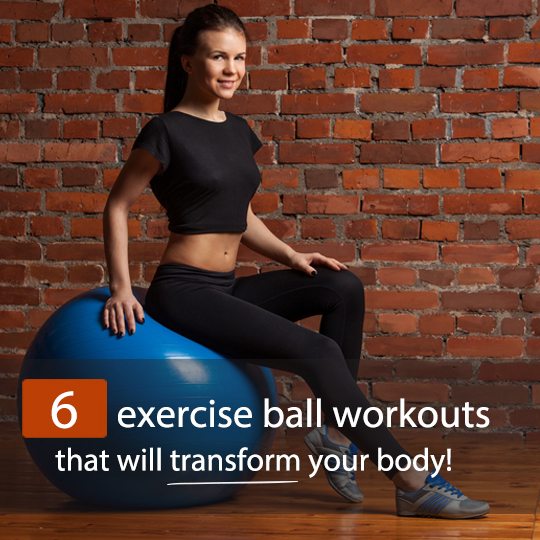
What Is An Exercise Ball?
Exercise balls, also known as Swiss balls, stability balls, physioballs, or fit balls, are large and vinyl, used to strengthen and stretch the body, improving core stability and balance. The soft elastic air-filled balls come in five sizes ranging from 35 to 85 centimeters (14 to 34 inches) in diameter, and can be sat on, squeezed, lifted or used to lean against. When selecting an exercise ball, it’s important to choose the correct size. To do this, sit on the ball with both feet flat on the floor. If your knees are bent at a 90-degree angle, then it’s the right fit!
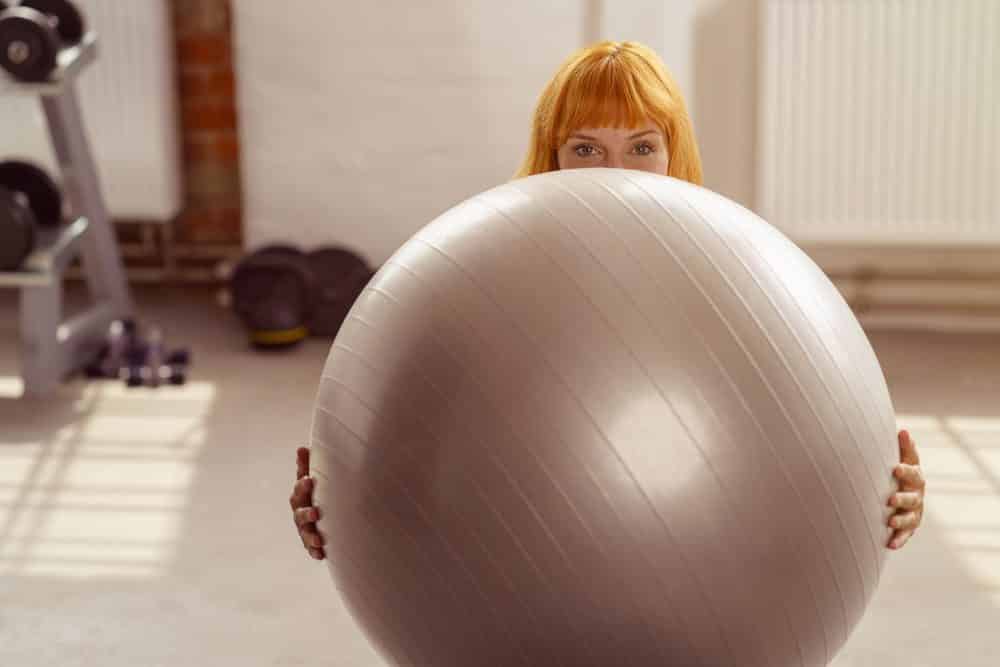
Benefits Of Using An Exercise Ball
There are endless ways to use these balls, and they can benefit anyone from pregnant women to people recovering from injuries…
For Core Strength
This is one of the most recognized benefits of fit ball exercises because there are so many sit-up and crunch variations you can do with the ball. As well as that, balance is a key part of using an exercise ball, which stabilizes the core and works the abdominal muscles and lower back muscles, which protect your spine, pelvis and shoulders. These muscles are extremely important and we use them often in daily tasks, such as lifting and reaching. By working on core stability and muscle condition, you can protect against injury, especially around the back. Some of the muscles you work during fit ball and balance exercises include the rectus abdominis, transverse abdominis, obliquus abdominis and erector spinae.
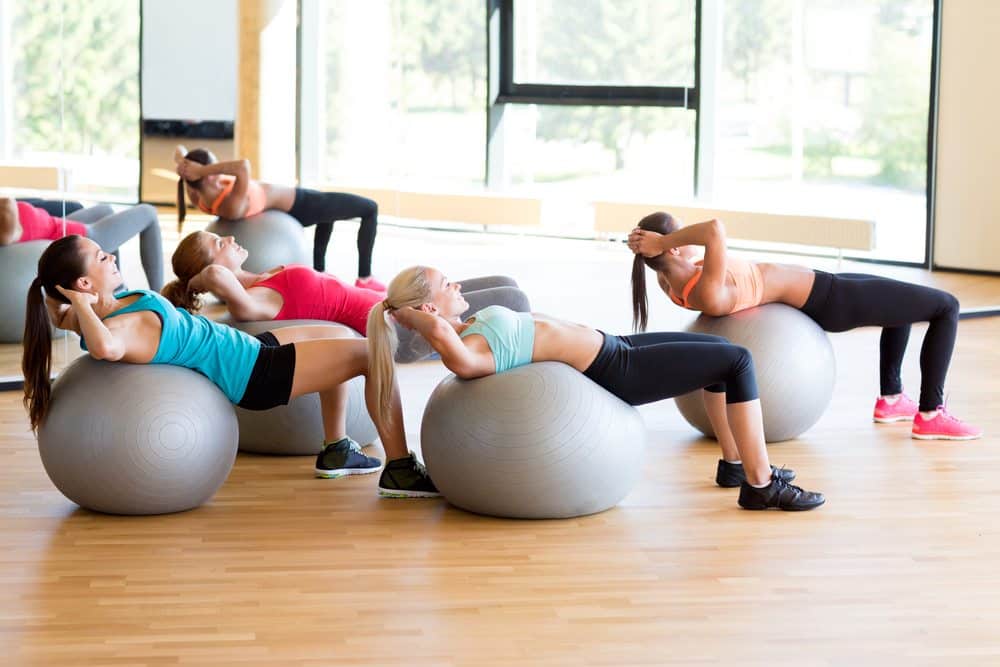
For Muscle Development
As well as working the large group of abdominal and back muscles, you can target just about every muscle in your body using an exercise ball. Some of the exercises below target arm, calf, inner thigh, hip and pectoral muscles, for example. The ball can be used as a weight bearing tool, for example, squeezing it between your ankles to work your inner thighs. You can use it to lift up and down over your head, working the muscles around your shoulders, which are great for posture.
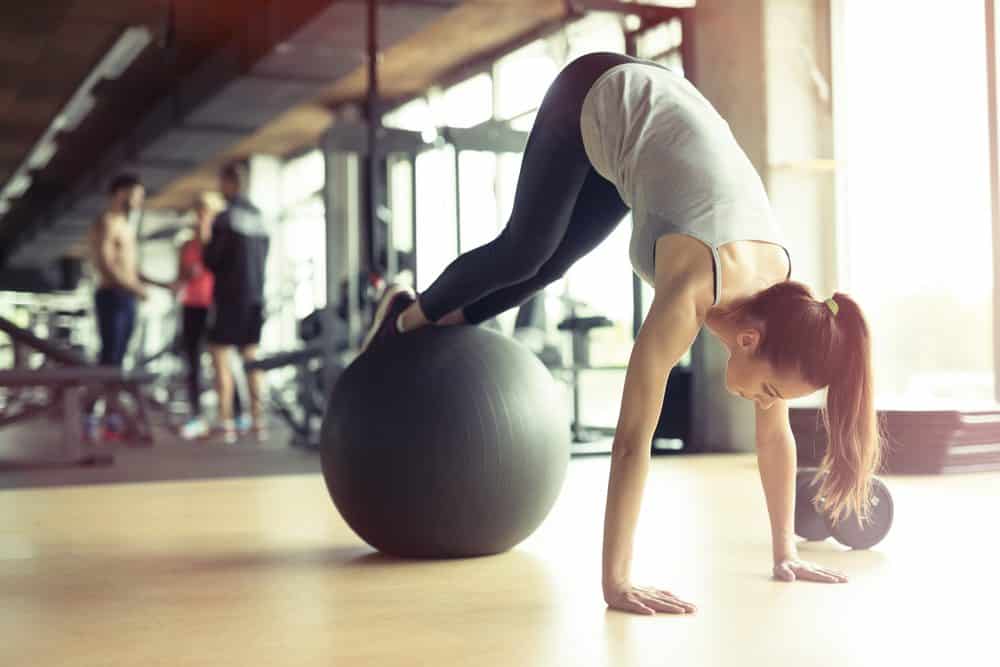
For Flexibility
Exercise balls are extremely beneficial for stretching and increasing flexibility. They can be used to aid yoga poses, or to warm up, cool down and stretch before and after a workout. Because they are so supportive but soft, you can use them to aid with backbends, seated forward folds and side body stretches, to name just a few. For example, to work on your backbends, you can begin by leaning your lower back against the ball, squatting down, but not sitting on the floor. Curl back, pushing yourself up and over from your feet so that you are lying over the ball. Extend your arms over your head, placing your hands on the ground behind you, and release your head and neck back and down. You should feel a significant stretch along the front of your body, while, at the same time, working your back muscles.

For Balance
Just about every exercise you do on the fit ball works on balance, especially any which involve sitting or lying on it. Balance exercises like this constantly work just about every muscle in your body, particularly your stabilizer muscles, which are largely around your core and back. This, in turn, increases core stability and strength, having a knock-on effect for core strength and balance…

For Posture
…And posture! Yes, by working on balance and stabilizer muscles, you are also working on posture! In order to stay balanced on an exercise ball, your stabilizer muscles need to be engaged, and that involves good posture. Your back should be straight, shoulder blades back and down, chest open and abs engaged. By practicing this position, you are incidentally working on your posture and practicing good posture. Not only that, but you can also use your ball to target postural muscles around the shoulders and upper back. For example, lifting the ball up and over your head, opening your chest and releasing your shoulder blades towards each other and down your back as a repetition exercise, you are strengthening those important postural muscles.
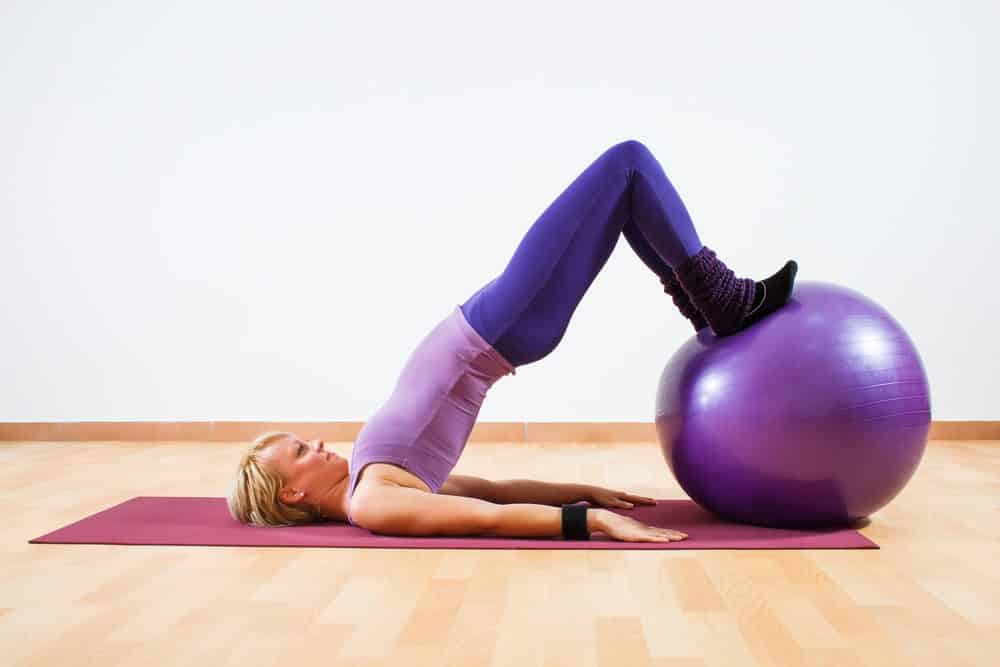
For Pregnancy
Exercise balls make very useful workout equipment for pregnant women to exercise with. They can be used to relieve discomfort, prepare for childbirth and maintain overall fitness. As well as strengthening the legs, back and core muscles, which can condition the abdominal muscles for labor, it can also help with relaxation, comfort and physical relief. With the extra weight the body has to carry during pregnancy, women can often alter their correct posture, putting excess strain on unwitting muscles. That’s where the exercise ball can come into play again, working on those deep supportive muscles in the lower back and core, improving posture and minimizing back pain.

Exercise Ball Workouts
There are countless repetition exercises and ways you can use your fit ball. Here is a sequence that targets every muscle group in your body…
Sit-Ups
This is one of the most recognized fit ball exercises, but crunches on the ball are actually much more effective than doing them on the floor because you can’t ‘fake it’ or collapse into your lower back – you have to practice balance at the same time.
Sit on the ball and place your hands either behind your head or crossed over your chest. Walk your feet away to a 90-degree angle from the floor so that your middle back is resting on the ball. Use your core to lift your upper body by about 45-degrees while scooping your deep abs towards your spine (think of your navel moving towards your back). Make sure you don’t strain your neck or lead with your head – your core should be doing all the work. As you inhale, return to your starting position. Continue 15 to 20 reps, then sit back up normally on the ball for a 10 to 20 second rest and repeat, completing a total of three rounds.
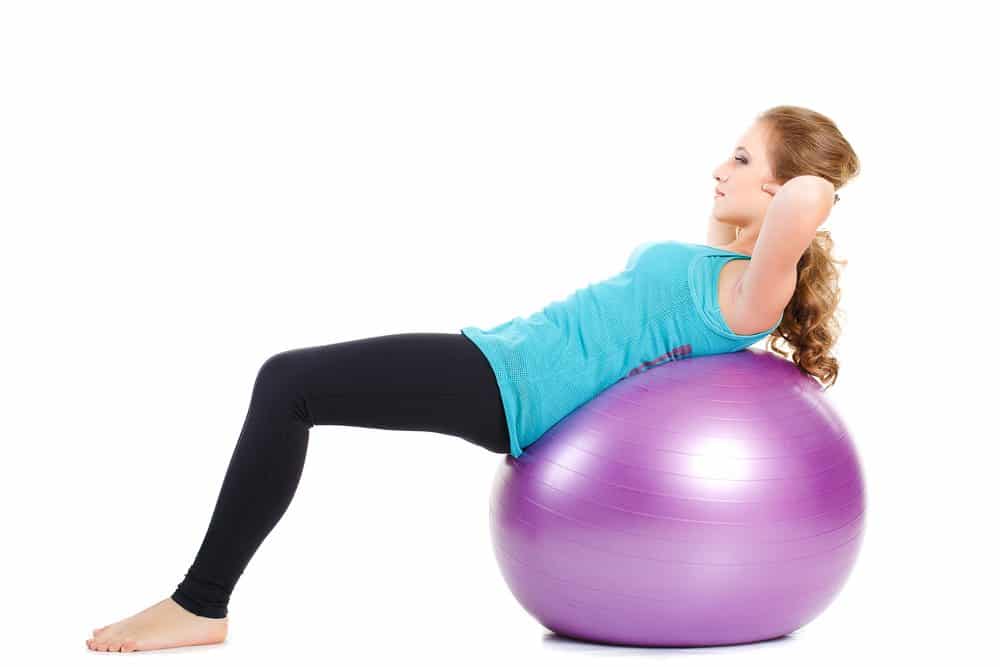
Leg Raises
This exercise targets your hips, thighs, lower back and core, but the main target area is the ‘saddlebag’ area of the outer thigh/hip. Lean your left side body against the ball with your left hand on the ground on the other side of the ball as if you’re doing a side plank. Your left outer ankle should be strong and supporting your legs. Lift your hips so that your body is in a straight line. Lift your right leg, keeping your body strong and firm, engaging your core. Hold the leg up for a breath and then slowly release it back down. Try to continue for one minute and then repeat on the other side.
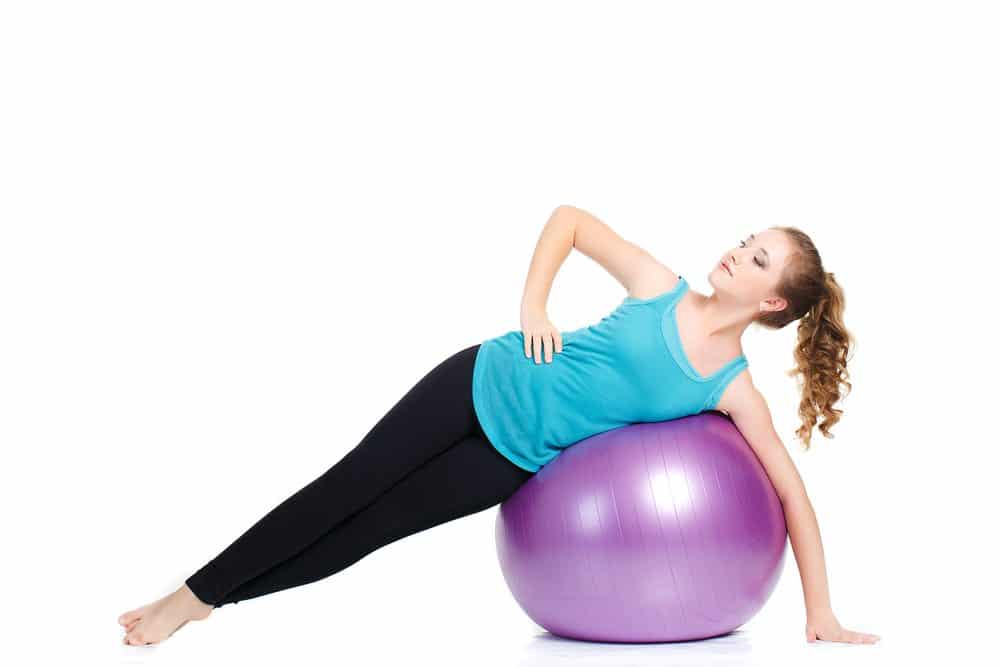
Hyperextension
Next we’re moving onto the lower back and postural muscles. Lay on your stomach over the ball with both hands behind your head. Your body should be in a straight line with the balls of your feet on the ground and your abdomen on the ball (your chest off the ball and above it). On an exhale, lower your shoulders down towards the ball and as you inhale, carefully engage your lower back and lift your chest back up. Keep your legs engaged so that you don’t collapse into your lower back. Complete 15 to 20 reps three times. When you’ve finished, release your hands from your head and rest them on the floor in front of you, melting over the ball to release and stretch your back.

Push-Ups
Many people think push-ups target the arms only, but they actually rely heavily on core strength and engagement, as well as working the pectoral muscles (on the chest), and even the upper back muscles around the shoulders. Start on your knees with your forearms and chest on the exercise ball. Curl your toes under and lift your knees so that you’re on the balls of your feet and your body is in a straight line. Then, keeping your core engaged, use your forearms to push your chest away from the ball on an inhale, keeping your body straight (not drooping your buttocks and lower back, or lifting them). As you exhale move your chest back down onto the ball, and continue five to 10 more times. Rest and complete another two sets of five to 10 reps. You can also move onto your hands instead of your forearms.
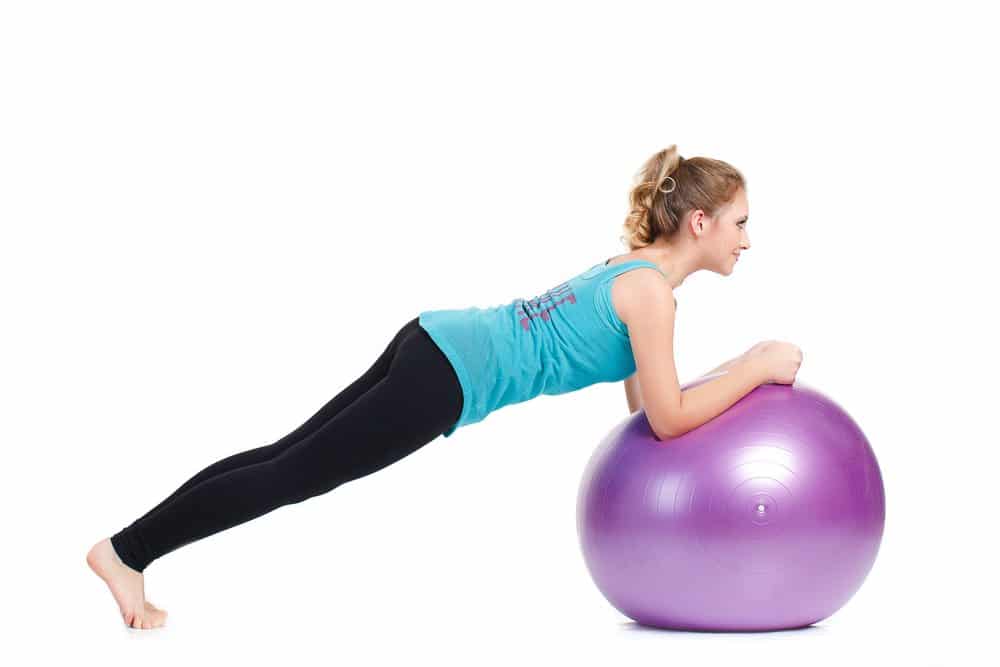
Plank
Plank is one of the best exercises you can do for overall fitness, strength and conditioning. It targets just about every muscle in the body and is an excellent core stabilizer. Using the exercise ball to lift your feet up higher in plank makes your abs and lower back muscles work even harder. All the while, you need to stay balanced and not let the ball slip away from you, demanding even more muscle engagement and strength! Start by lying on top of the exercise balls with your shins on the ball and your hands on the floor in front. Engage your core and walk your hands forward so that your feet are on the ball and your body is floating above the ground in a straight line.
Again, make sure your buttocks isn’t lifted or drooping down. Check that your wrists are directly under your shoulders and you are distributing weight right across your hands and fingers to avoid a wrist injury. Hold here (remembering to breathe!) for between 30 and 60 seconds (depending on your strength and fitness level). After a couple of weeks, you can start adding press ups to really test your strength and work your muscles. On an exhale, bend your elbows, lowering your chest and face towards the floor, hover, and then lift back up, straightening your arms on an inhale. Start with five to 10 repetitions in a round of two or three and work up to 15 to 20 over time.

Ball Pass (Leg Lifts)
As well as targeting your inner thighs, this exercise also targets the deep low abdominal muscles that tend to be ignored in other ab exercises like crunches. Start on your back, holding the ball between your ankles, keeping your legs straight. Place your hands either behind your head or underneath your lower back and strongly engage your core, lifting your legs straight up into the air on an inhale. Then, slowly lower back down to a hover above the ground on an exhale. Make sure you don’t arch your back and curl the crown of your head under – your back should remain flat on the floor. Repeat five to 10 times for two to three rounds, and, again, increase over time to 15 to 20.
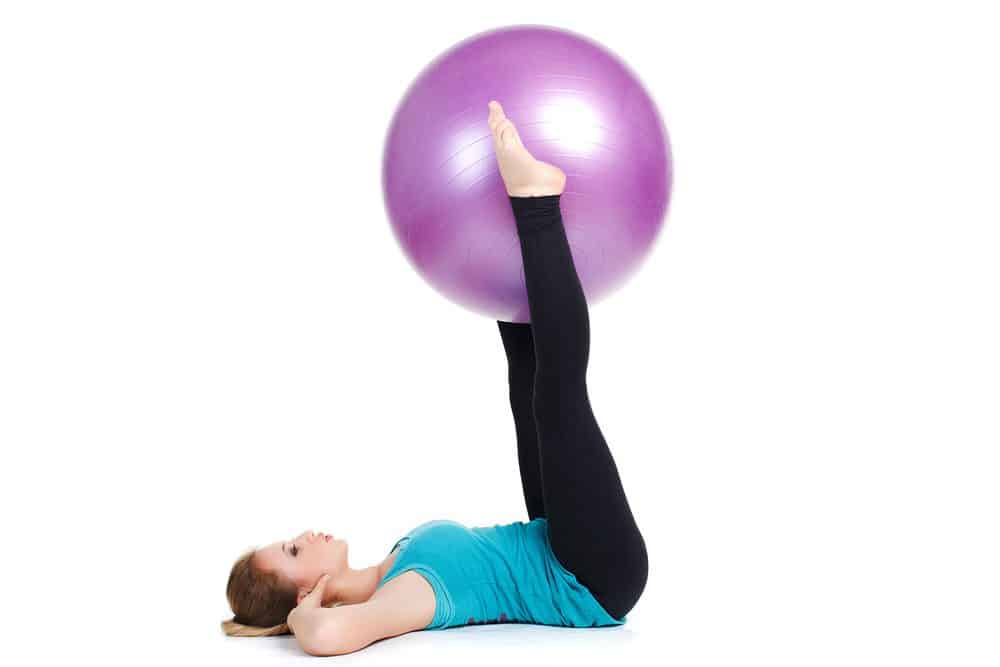
Side Leg Lifts
Keeping the ball in between your ankles, lift your legs up straight and, as you exhale, carefully lower your legs to the right, keeping your buttocks cheeks, back and shoulders on the ground. You should feel a stretch along your left hip and outer thigh, and engagement across your core. Lift your legs back up on an inhale and lower to the left on your next exhale. Continue for a three rounds of 20. Again, make sure your back is firmly against the floor or mat, not lifting or straining.
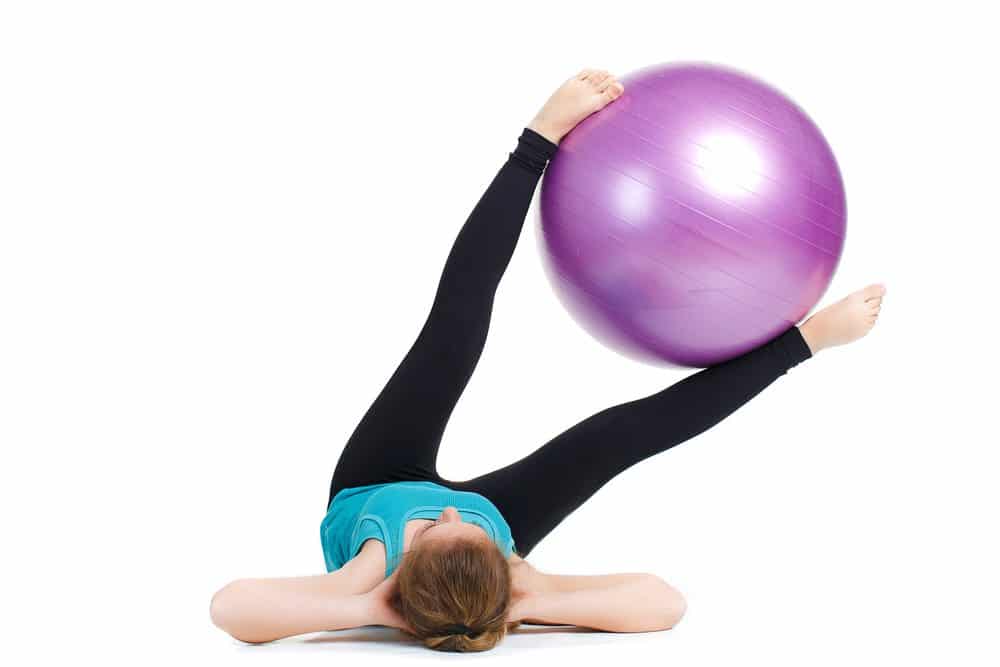
Exercise Ball Workout Video Workouts
Here are some exercise ball workouts to target specific areas, including your core and legs, or with specific aims in mind, such as balance or pregnancy. You can add some of these together to create a super workout!
Core Exercise Ball Workout
Leg Exercise Ball Workout
Upper Body Exercise Ball Workout (Chest, Biceps, Triceps)
Lower Back Exercise Ball Workout
Pregnancy Exercise Ball Workout
NOTE: Always consult your doctor before starting any new exercise routine, especially if you are pregnant or recovering from an injury.


